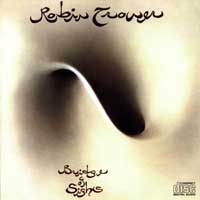Beatles Recording Engineer Geoff Emerick Page 3
So they never did say, "Geoff, we're going to do Yellow Submarine in surround; will you help?" No, of course not. Remember, Abbey Road made all the Beatles records - I didn't. And I never gave any final seal of approval to the surround mixes. In fact, when I heard the finished mixes, I thought they sounded nice and clean and pristine - but a little like Muzak. All the heart and soul was gone.
In fact, as a test, they took that last piano chord on "A Day in the Life" and tried to clean it up. They put it through their de-noise system. But underneath that original chord, if you listen to it carefully, there's a harmonium with a "zzzzzzz." And the de-noise system took the buzz off. It changed the character of the original sound. So, you don't really touch these recordings unless you get someone who was involved with them - someone who was there.
After all, for the Yellow Submarine and Anthology DVDs, Abbey Road had to find all the 4-track tapes and lay them onto a digital multitrack. And in cases where we'd originally done a 4 to 4 - mixing the first four tracks down to one track on a new tape [to open up three new blank tracks] - they had to take the first 4-track and lay it onto it the next 4-track, with the overdubs. So they're listening with headphones and putting it on varispeed, and if the sound image drifts from side to side, they know it's not in sync. They're trying to keep the image in the middle, and they start laying these tracks on, and then they try to reassemble it all - well, we're not there... It's a joke, it really is.
Let's just imagine that, someday, Abbey Road actually asks you to help remix all the Beatles albums in surround for DVD-Audio or SACD. Well, what do I do? I'm not for it. But if it's going to be done anyway, I'd sooner be present than let someone else do it.You say in your book: "Watching a gripping new movie is almost as exhilarating to me as hearing a great new record for the first time or mixing an exciting track. Almost, but not quite." Is that at a cinema, or do you have a home theater? Yes, I've got a system with surround sound - for watching movies, not for listening to music. I like to be entertained by a film. And I still like old films - the black-and-white stuff where you don't see so many cuts and it's more like a stage play. But now, as you know, there are 20 cuts every 5 seconds, and there's always someone running away from an explosion.
GETTING THE SOUND OF A BRIDGE BY A TROWER
 Let's talk about a couple of other artists you've recorded. In the liner notes to his 1974 album, Bridge of Sighs, which you engineered, Robin Trower says: "Special thanks to [producer] Matthew [Fisher] and Geoff for making it sound so good." How did you get that guitar sound, with its incredibly rich sustain? We recorded that album in a big studio, the original Air Studios in London. And Robin used Marshall amps - a few of them - with a Fender Blender pedal. I staggered the amps around the studio, and there was quite a lot of air around them; I didn't put the mikes right up to the cabinets. So there was a lot of the room's ambience in that sound. And on vinyl especially, you can hear that rich tonal quality from the master. On CD, you can't hear the depth of the guitar. I've spoken with Robin about this, and I know he's got problems with it.
Let's talk about a couple of other artists you've recorded. In the liner notes to his 1974 album, Bridge of Sighs, which you engineered, Robin Trower says: "Special thanks to [producer] Matthew [Fisher] and Geoff for making it sound so good." How did you get that guitar sound, with its incredibly rich sustain? We recorded that album in a big studio, the original Air Studios in London. And Robin used Marshall amps - a few of them - with a Fender Blender pedal. I staggered the amps around the studio, and there was quite a lot of air around them; I didn't put the mikes right up to the cabinets. So there was a lot of the room's ambience in that sound. And on vinyl especially, you can hear that rich tonal quality from the master. On CD, you can't hear the depth of the guitar. I've spoken with Robin about this, and I know he's got problems with it.
But Robin's guitar was one of the hardest guitars ever to record. Those Marshalls didn't have a lot of presence. I used Neumann condenser mikes - and as I said, we were able to get a lot of the room into that sound.























































